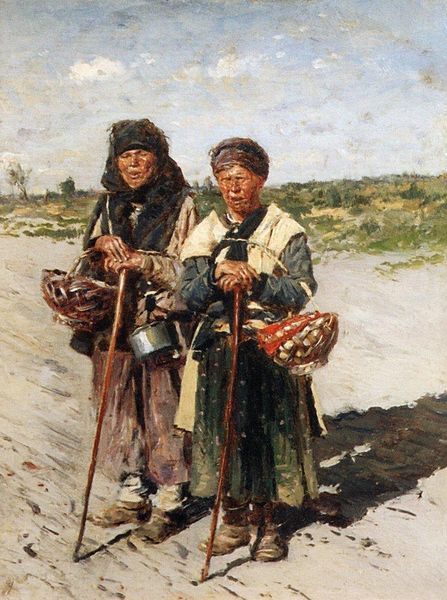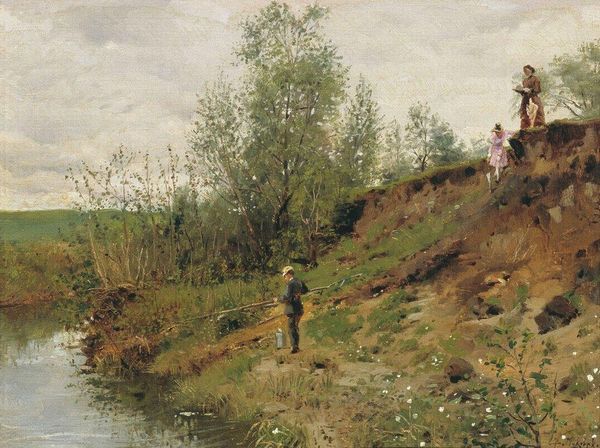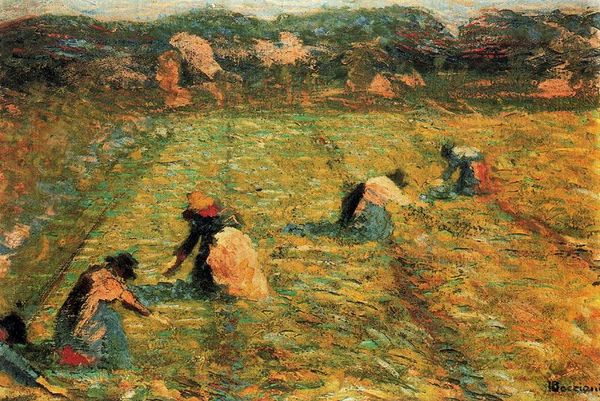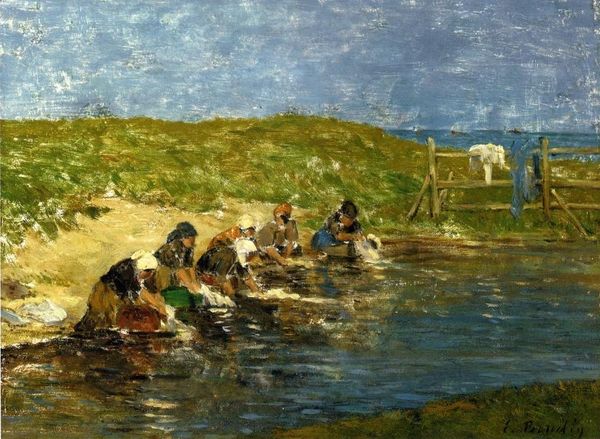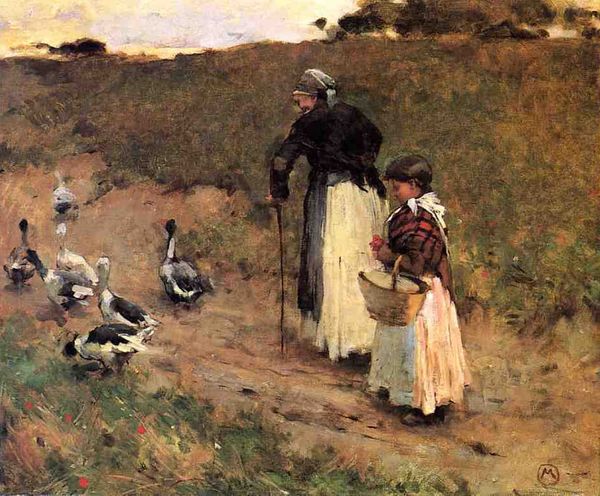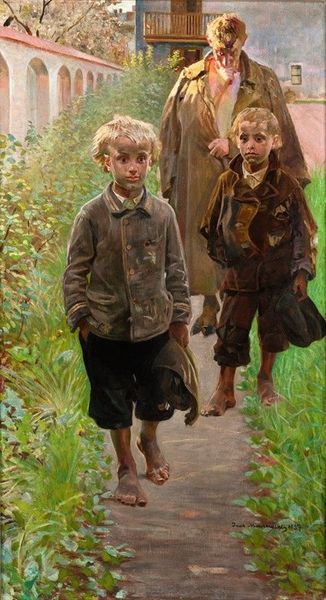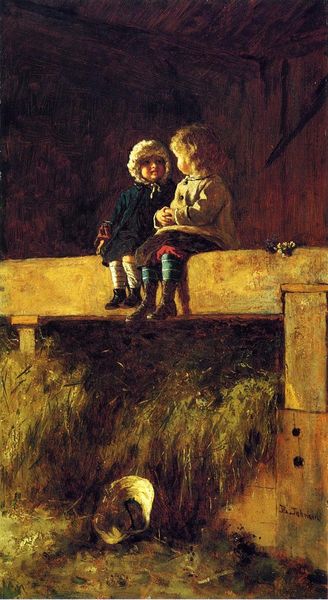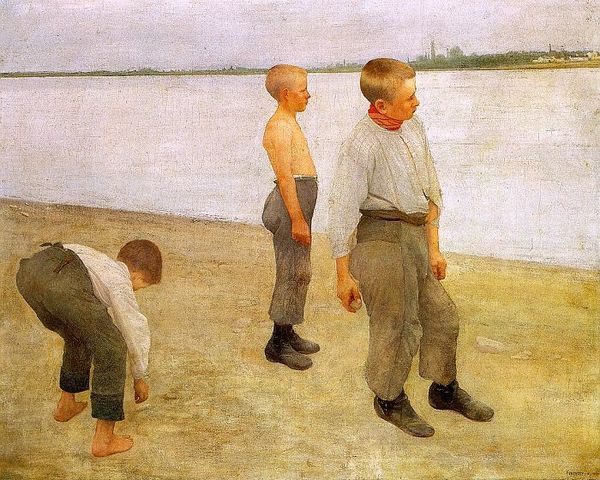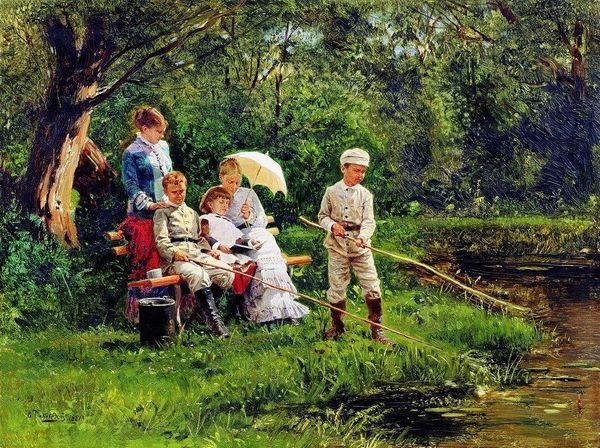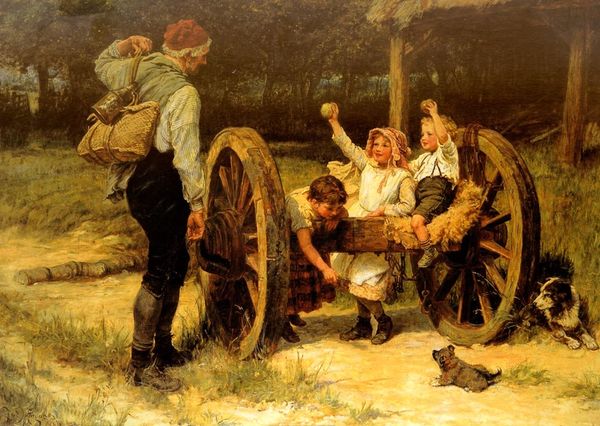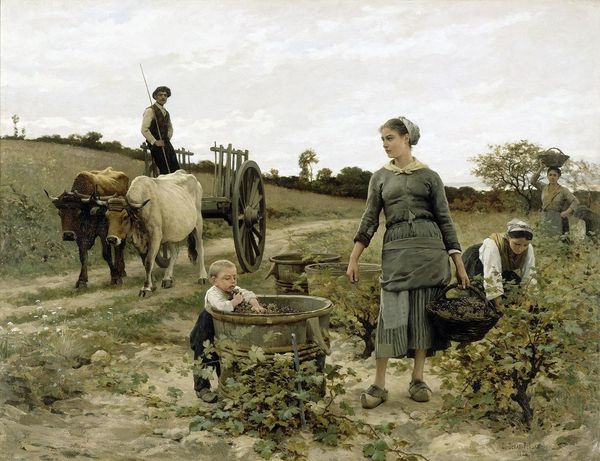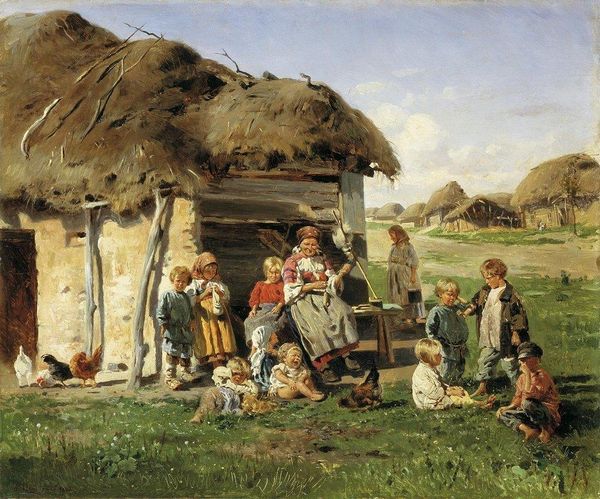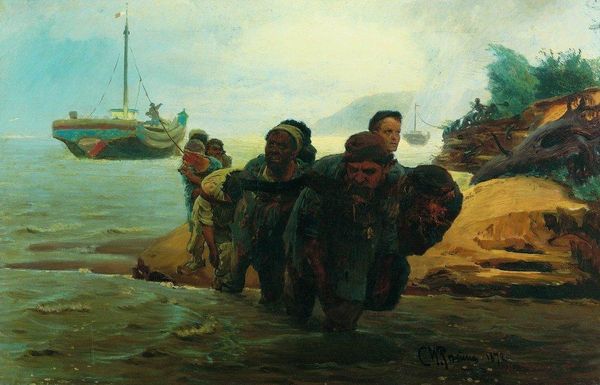
painting, oil-paint
#
narrative-art
#
painting
#
impressionism
#
oil-paint
#
landscape
#
impressionist landscape
#
oil painting
#
child
#
painting painterly
#
genre-painting
#
realism
Dimensions: 37 x 45 cm
Copyright: Public domain
Curator: Let's delve into Vladimir Makovsky's "From the Rain," created in 1887. It is now housed in the Ulyanovsk Regional Museum of Fine Arts in Russia. Editor: My first impression is of a damp, carefree moment. The color palette leans heavily on greens and grays, mirroring the cloudy sky, while a group of children seem happily unbothered by it all, gathered on the muddy bank. Curator: Precisely. Considering the materials, the oil paint allows for the capturing of this exact transient scene. You can see in the texture, especially around the figures, where thick layers and visible brushstrokes add to the sense of immediacy. There's also a story being told of these children's lives and leisure. Look at the state of their clothes, suggesting poverty and labor. Editor: Yes, I see that immediately in the imagery itself. They're near the water—water often symbolizes cleansing or a transition. In this context, do you think it suggests an attempt at purification from the hardship of their daily lives? Maybe a temporary escape? Curator: That's insightful. It's crucial to examine the symbolism within the setting as a marker of their material conditions. The natural world here contrasts starkly with whatever homes they might have gone to. Their proximity to water and nature can then become symbolic of access to resources – or a lack thereof. Editor: It reminds me a little of childhood, too. These kids seem undisturbed despite what are evidently harsh surroundings, as seen through their worn attire and barefoot stroll. Their grins imply a type of joy and flexibility; are they, then, indicators of future optimism or acceptance, coded via these postures? Curator: It highlights the intersection of socio-economic class and the lived experiences of children in 19th-century Russia. But more than that, it examines the broader ideas of innocence, leisure, and labor and challenges the role these have in society. Editor: Exactly. Considering these details through an iconographic lens allows for deeper thought on societal structure itself as this is subtly depicted using materials that amplify their situation. Curator: Indeed, I think appreciating how materials are intertwined within such depictions allows a modern audience a unique look at an intersection of themes. Editor: Ultimately, through careful observation of visual signals as linked to their production and resources available during painting, both the artist's intent and his audiences are more connected to their own environment by seeing the symbolic language surrounding it.
Comments
No comments
Be the first to comment and join the conversation on the ultimate creative platform.
